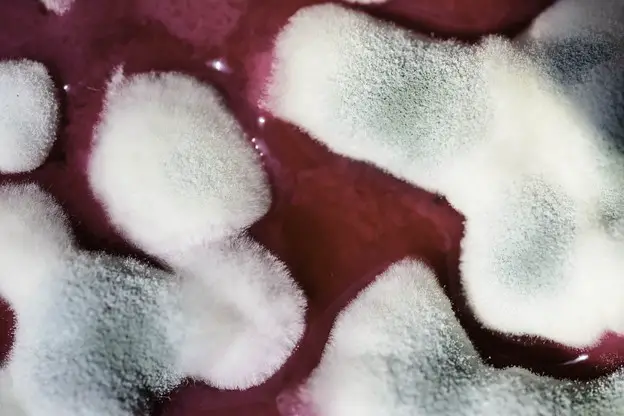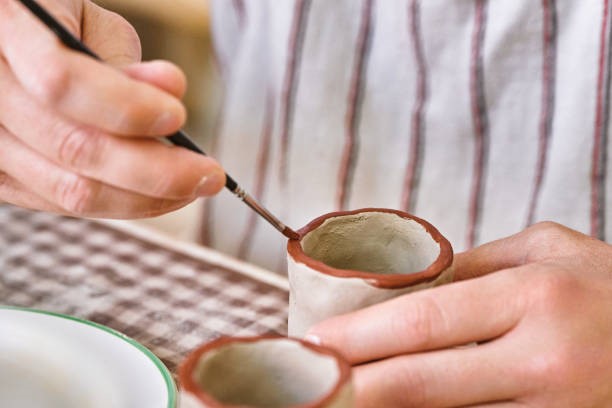Anything that has even the slightest amount of moisture will most definitely be prone to mold growth. Air-dry clay is no exception to this. As a regular crafter, you must have heaps of unused air-dry clay lying around in the crafting studio without being used for months and even years. While most crafters fear that their air-dry clay will become hard and unusable, there is another fear that lurks beneath the shadows. It is the fear of your air-dry clay becoming moldy.
So, can air-dry clay grow mold? Let us understand the clay in-depth.
Moisture and Clay Equals Mold Growth
The biggest enemy of your air-dry clay is moisture. While moisture is important to ensure that you can knead and mold your air-dry clay, the very same moisture could also be a platform for mold growth. Add to this improper circulation, and voila, there is a substantial amount of mold growth in your clay.
Do not doubt that the mold spores are present in your clay from the very start. Even packaged air-dry clay could hold a good amount of mold spores that might have made their way through during the packaging. However, these spores only grow after being exposed to the right conditions.
If you happen to store your air-dry clay in a room with relatively high moisture content which is about 60 percent of the relative humidity, it can lead to mold formation. This is especially true if you happen to store the clay in a room with minimum or zero ventilation.
Can You Touch Molded Air-Dry Clay?
In most cases, mold isn’t harmful when touched. However, certain species might affect your health and lead to issues such as skin irritation. So, it is better to avoid skin contact to ensure you do not accidentally harm yourself in the process.
It is perfectly normal for the air-dry clay to consist of mold spores within it. To top it all, air-dry clay with a bit of mold can make this clay rather workable. However, you don’t have to worry about the clay going bad too soon. It takes years for properly packed air-dry clay to get completely moldy. It could take even as long as 3 years for a mold to start showing on your air-dry clay.
If you do see your air-dry clay with yellowish or black mold developing on your clay, it is better not to use the clay anymore. Also, keep in mind not to touch the clay whatsoever.
Can Molded Air-Dry Clay Be Used?
Now, the answer to this question is a bit complex. For this, you need to consider the degree of mold spread in the clay. A small amount of mold is nothing to worry about. It adds to the moldability factor of the clay. So, you can surely use air-dry clay with a little mold on it. Simply remove the infected part and begin your work as you do regularly.
There are several tricks you can use to salvage the clay. However, the best one you can try is by mixing some bleach with water and spraying it on the clay. After you do this, leave the clay aside for a few hours. This will get rid of the mold that has developed in the clay.
Can Moldy Air-Dry Clay Smell Bad?
Yes, it is the nature of mold to smell bad. This is caused due to the gases released after the mold starts digesting the clay. So, should you use air-dry clay that has gone bad or smells bad?
Well, it can take air-dry clay a long time to go bad and smell so that you cannot use it anymore. Mold develops very slowly and will only smell bad if it has been lying around for quite some time. If the air-dry clay starts to smell, it has gone beyond the point of being salvaged. So, the best thing is to throw them away completely. Use a glove to hold the clay drop it safely in a dustbin bag and throw it away.
What is the sign of air-dry clay mold development?
Before you throw away or use your clay, you need to know whether the clay is actually infected with the same. Detecting the presence of clay before you start using air-dry clay will help you stay away from allergic reactions and also salvage the clay for future use.
Here are some signs of moldy growth in your air-dry clay:
- Formation of colors such as green, black, or white
- An earthy smell radiates from the air-dry clay
- Allergic reactions if you happen to touch or breathe in the spores
Here are some symptoms of toxicity from mold infection:
- Nasal allergies
- Memory problems
- Gut issues
- Breathing issues
- Muscle ache
- Itchy eyes
- Sinus congestion
- Irritation
- Runny nose
- Skin rashes
How can you reduce the air-dry clay mold growth?
Air-dry clay is precious to all crafters. You won’t want your hard-earned money to go to waste. However, to ensure that the air-dry clay doesn’t go to waste, you need to ensure that you practice safekeeping by following certain methods.
First, you can cut down any rapid mold growth by using the aforementioned bleach solution and spraying it on the infected area. The bleach solution should have 1 part bleach and 9 parts water in combination. However, this solution would only work if the growth isn’t rooted deeply in the air-dry clay.
Alternatively, you can use vinegar to clean off the mold development in your air-dry clay. However, it might leave a citrus-like smell that all might not like.
Solution | Usage Technique |
| Hydrogen Peroxide | Using diluted or undiluted hydrogen peroxide(food-grade) sprayed on air-dry clay can help reduce mold growth |
| Dettol | Dettol is perfect for tackling the mold growth as well as the smell |
| Bleach | Bleach solution mixed with water in a 1:9 ratio can help get rid of the air-dry clay mold |
| Epsom Salt | Epsom salt added in the warm water can be sprayed over mold to get rid of the same |
| Vinegar | Vinegar can directly be used on mold-ridden clay. However, you must let it sit for at least 8 to 9 hours for it to work |
Conclusion
Molding is very common in air-dry clay. So, the key is to ensure that you keep it packaged the right way. Always store your air-dry clay in a place that is well-ventilated and isn’t exposed to moisture or direct sunlight. When using the bleach cleaning method, make sure to use gloves for safety purposes. And, most of all, have fun crafting!








